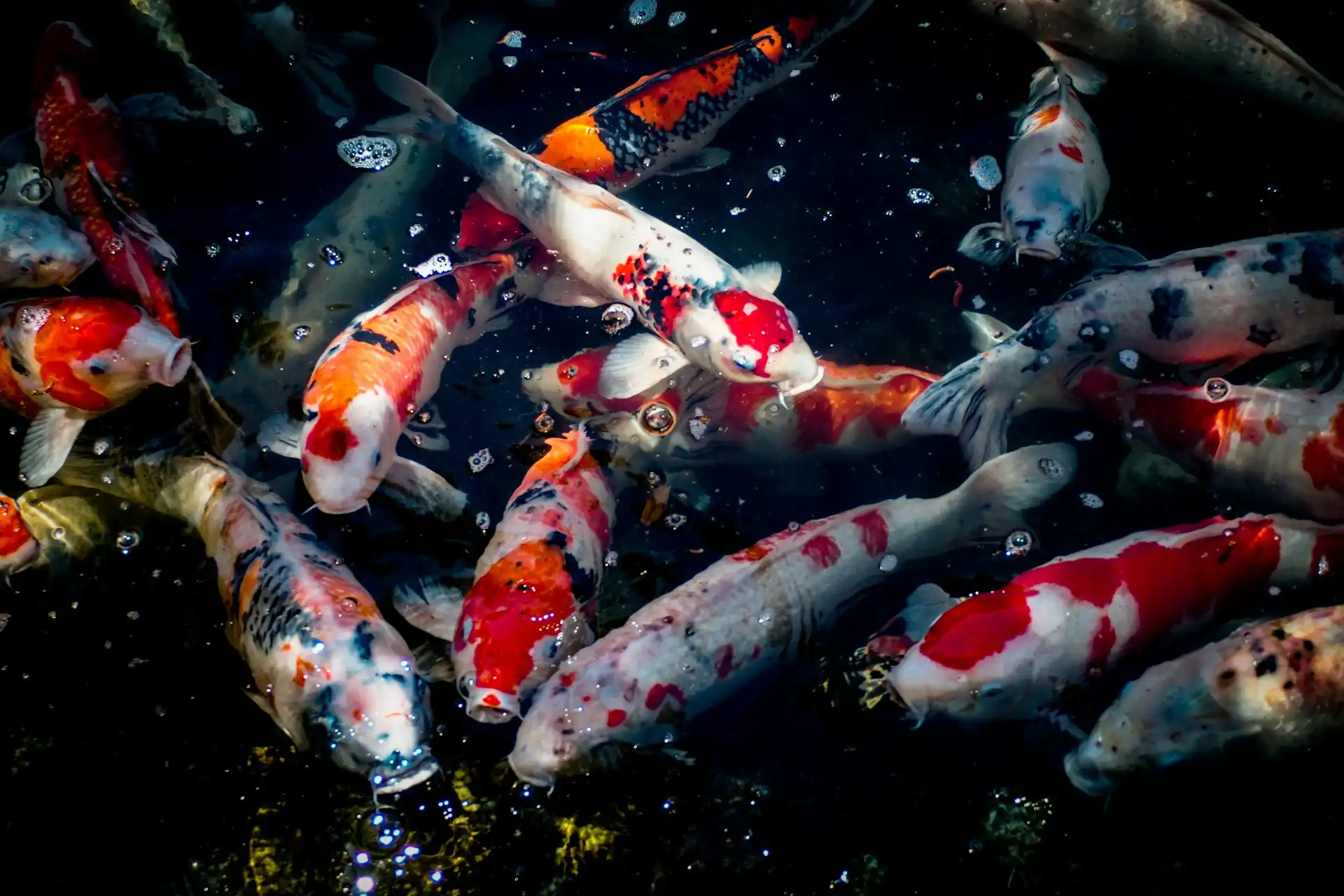
01 Aug 5 Diseases That Might Impact Your Koi and What to Do About Them
Koi ponds are elegant, living ecosystems, but they’re also delicate. Without regular, expert care, even a pristine-looking pond can become a breeding ground for parasites and bacteria that pose serious threats to your fish. In the Beverly Hills area, we frequently diagnose and treat diseases that arise from poor water quality, overcrowding, seasonal stress, or the introduction of new fish. Below are five of the most common health issues koi face—and how we address them.
1. Skin and Gill Flukes (Monogenean Trematodes)
Overview:
Flukes are microscopic flatworms that attach to a koi’s skin or gills. They are among the most common parasitic threats in ornamental ponds. These pests feed off the host’s epithelial cells and mucus, often going undetected until significant damage has occurred.
Symptoms:
- Excessive flashing (rubbing against surfaces)
- Lethargy or gasping at the surface
- Frayed fins and cloudy skin
- Increased mucus production
Causes:
Flukes often hitchhike on new, untreated fish or plants. They thrive in stagnant water or ponds with declining water quality.
Our Treatment Approach:
We perform microscopic parasite identification using skin and gill scrapes. Once confirmed, we apply appropriate anti-parasitic treatments, such as praziquantel or flubendazole. Preventative programs include regular water testing, filtration audits, and careful quarantine protocols for new stock.
2. Anchor Worms (Lernaea spp.)
Overview:
Despite their name, anchor worms are crustacean parasites—not worms—that burrow into koi tissue and extend anchor-like appendages to secure themselves. They are visible to the naked eye.
Symptoms:
- Red sores or ulcers around the base of the fins
- Inflammation or open wounds
- String-like protrusions from the skin (the parasite’s tail)
Causes:
Anchor worms are commonly introduced via the introduction of new fish. They reproduce rapidly in warm water conditions, particularly during summer months.
Our Treatment Approach:
We manually remove visible parasites when possible and follow up with targeted organophosphate-based treatments under controlled conditions. We also inspect the pond for intermediate hosts and treat the entire system to break the reproductive cycle.
3. Ich (Ichthyophthirius multifiliis)
Overview:
Ich, or “white spot disease,” is a protozoan parasite known for causing sudden outbreaks, particularly after temperature fluctuations. It’s highly contagious and can spread rapidly through a pond.
Symptoms:
- White spots (resembling grains of salt) on skin and fins
- Clamped fins and erratic swimming
- Loss of appetite and hiding behavior
Causes:
Ich is triggered by environmental stress, often due to poor water quality or rapid temperature changes. It is often introduced via new fish or equipment.
Our Treatment Approach:
We stabilize water temperature and administer pond-wide treatments using formalin or copper-based solutions. Filtration systems are checked and cleaned to ensure efficient parasite removal.
4. Bacterial Ulcer Disease (Aeromonas and Pseudomonas spp.)
Overview:
These gram-negative bacteria are opportunistic pathogens. Once the skin barrier is compromised (often by parasites or injury), bacterial infections take hold, leading to ulcerations.
Symptoms:
- Open wounds with reddened edges
- Swelling or bloating
- Loss of scales and color
- Behavioral withdrawal
Causes:
These bacteria flourish in high organic loads and warm, oxygen-depleted water. They often follow parasite infestations or occur in overstocked ponds.
Our Treatment Approach:
We isolate affected koi when necessary and administer antibacterial baths or injections depending on severity. We also address the underlying water chemistry issues that support bacterial growth, performing bio-load assessments and rebalancing pond ecology.
5. Costia (Ichthyobodo spp.)
Overview:
Costia is a flagellated protozoan parasite notorious for attacking weakened koi, especially during cold spring temperatures when immune responses are suppressed.
Symptoms:
- Sluggish behavior
- Excess mucus
- Discoloration or skin erosion
- Gilling or labored breathing
Causes:
It typically arises in under-maintained ponds or in fish already weakened by other parasites or transport stress.
Our Treatment Approach:
Due to Costia’s resilience, we apply potent oxidizing agents (e.g., potassium permanganate) in carefully dosed treatments. Diagnosis is confirmed via microscope. Preventative strategies include spring system checks and water parameter stabilization.
How Aquatic Gardens Maintains a Disease-Free Pond Environment
We don’t just respond to disease—we work proactively to prevent it. Our koi pond maintenance services in Beverly Hills include:
- Routine Water Quality Testing: Monitoring ammonia, nitrite, pH, dissolved oxygen, and temperature fluctuations to maintain a biologically stable environment.
- Microscopic Diagnostics: Identifying parasites before they become symptomatic.
- Quarantine Protocols: Advising or implementing quarantine practices for new fish.
- Filtration System Optimization: Ensuring UV sterilizers, biological filters, and mechanical systems are correctly sized and maintained.
- Seasonal Pond Care: Adjusting treatment plans and maintenance schedules based on seasonal risks.
A koi pond is a living ecosystem, and healthy fish are its most visible measure of success. We bring over 20 years of technical experience to each pond we service. Whether your koi are showing early signs of distress or you want to prevent problems before they start, we provide precision care tailored to the needs of each unique pond.
Let us safeguard your koi and preserve the balance of your pond, because disease prevention starts with expert maintenance. Are you seeing signs of stress in your koi? Contact Aquatic Gardens for immediate, professional care.



